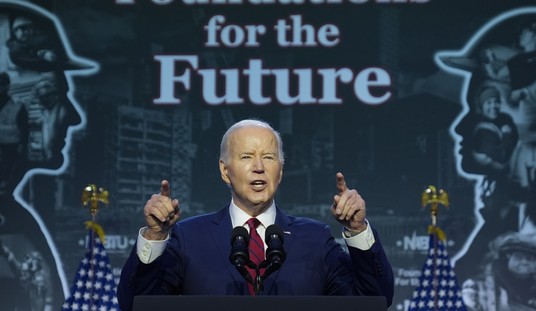On the eve of the 2016 election, polling analysis site FiveThirtyEight predicts a Republican Senate win, at 54 percent. According to their latest update, Democrats are likely to pick up two seats in the U.S. Senate, but that will not give them the majority they seek. This might be particularly surprising, given the same site gives Hillary Clinton a 69 percent chance of winning the presidency.
Every two years, roughly one third of the seats in the U.S. Senate are up for re-election. This year, the seats which mostly Republicans won in the Tea Party wave of 2010 are once again in jeopardy. Democrats expected to make a major dent in the Republican majority won in 2014, but their chances of doing so — even with the immensely unpopular Donald Trump leading Republicans — are quickly vanishing.
Like Republicans in 2014, Democrats were able to assemble a competitive slate of challengers: a sitting governor, former senators, a former secretary of State, and more than a couple veterans. Unfortunately for them, most incumbents have run strong campaigns.
In the Ohio race, which was supposed to be close, Republican Senator Rob Portman has a hefty 18 percent lead over Democrat former Governor Ted Strickland, according to the RealClearPolitics average. Portman distanced himself from Trump early, and Strickland did not have the best record as the state’s governor. His tax and regulatory policies sent jobs to other states. During the campaign, he even declared that “the death of Scalia saved labor.” Ouch.
Here are the ten seats which RealClearPolitics rates as “lean” or “tossup,” and one more which could go Republican or Democrat. These eleven states are the ones to watch tomorrow, ranging from least to most competitive. With each state I have included the FiveThirtyEight projection, R for Republican, D for Democrat.
11. Louisiana (R).
The Pelican State does primaries differently than other states. Rather than having primaries in the spring or summer of an election year, the state holds an open primary on the day of the general election, where multiple Republicans and multiple Democrats run against each other. If no candidate receives more than 50 percent of the vote, there is a run-off with the top two finishers.
It is theoretically possible, in other words, for two Republicans or two Democrats to face one another in December for the Senate seat. This makes Louisiana very interesting.
According to the RealClearPolitics average, there are six viable candidates, with a Republican in the lead and a Democrat in second place. Republican John Kennedy, a state treasurer who ran for U.S. Senate as a Republican in 2008 and as a Democrat in 2004, is in the lead with 22.7 percent. Just behind him stands Democrat Foster Campbell, a former state senator, and a former candidate for governor (2007) and for U.S. House of Representative (1980, 1988, 1990), who holds 16.7 percent.
Just behind them stand Republican Representative Charles Boustany (13.3 percent), Democrat attorney Caroline Fayard (11.3 percent), Republican Representative John Fleming (9.3 percent), and U.S. Air Force Colonel Rob Maness (3.3 percent).
The Republican vote is split between at least four competitive candidates, while the Democrats only have two. Primary polling is not as reliable, so it is theoretically possible for the polls to be off. While a race between Kennedy and Campbell seems likely, all sorts of results are possible: including an all-Republican race between Kennedy and Boustany or an all-Democrat race between Campbell and Fayard.
Next Page: The “leaning” states: one Democrat, one Republican.
10. Arizona (R).
Republican Senator John McCain enjoys a strong lead (10.0 percent in the RCP average) over Democrat Congresswoman Anne Kirkpatrick in the Arizona Senate race. After first endorsing Trump, McCain withdrew his endorsement weeks ago.
Trump leads in Arizona by 4 percent in the RCP average. The state is reliably Republican, but has a growing Hispanic population which gave Democrats hope that they could take the Senate seat this year. When McCain won the Republican primary, however, the chances of such a pickup decreased.
9. Colorado (D).
Democrats are likely to maintain the Senate seat from Colorado, held by Senator Michael Bennet. His Republican challenger, El Paso County Commissioner Darryl Glenn, is a Tea Party candidate, endorsed by Sarah Palin, Ted Cruz, Cory Gardner, Mike Lee, and Rand Paul.
Bennet leads Glenn by 7.4 percent in the RCP average, a much wider gap than Clinton’s 2.9 percent lead over Trump in the Centennial State. Bennet has all the advantages of an incumbent, and while Glenn has strong right-wing endorsements, he is only a county commissioner, running for national office for the first time.
In 2014, Republican Cory Gardner (then a U.S. Representative) defeated incumbent Senator Mark Udall. Udall had run a campaign focused on social issues, pushing the “war on women” narrative. He tanked when Gardner focused on the economy and jobs. Bennet has not repeated this mistake.
8. Florida (R).
When Senator Marco Rubio announced his race for the presidency, he announced he would not be running for re-election to the Senate. After losing his home state of Florida to Donald Trump in the March 15 primary, Rubio dropped out of the presidential race, and eventually re-entered the Florida Senate race in June.
Since re-entering the race, Rubio has led Democrat Representative Patrick Murphy. Rubio currently holds a 3.7 percent advantage, and the race is rated “leans Republican.”
In the presidential race, Trump has been gaining on Clinton, and now the Democrat only leads by 0.4 percent — an essential tie. While Rubio endorsed Trump, he has consistently outperformed the Republican presidential nominee in the Senate race.
Next Page: Less safe Senate races.
7. Wisconsin (D).
Republican Senator Ron Johnson faces stiff competition from Democrat former Senator Russ Feingold. Feingold currently leads Johnson by 2.7 percent in the RCP average. The Democrat has been ahead for most of the year, but the race has narrowed since late October.
Groups on both sides have invested heavily in the race, and the most recent poll put Johnson down by a mere 1 percent. Clinton leads Trump by 6.5 percent in the state, which has not voted for a Republican in the U.S. Senate since 1980. While the race is narrowing, it is still likely going to flip from Republican to Democrat.
6. North Carolina (R).
Incumbent Republican Senator Richard Burr holds a 2.2 percent lead over Democrat former state Representative Deborah Ross. The Tar Heel State’s Republican tilt has also helped Trump, who leads Clinton by 1.4 percent.
The Democrats’ strongest potential candidate, Attorney General Roy Cooper, decided to run for governor instead, giving incumbent Governor Pat McCrory a tough race. Cooper currently leads McCrory by 2.2 percent.
Ross, meanwhile, has never pulled ahead of Burr during the Senate race. There are very few swing voters in North Carolina, so the race will depend on turnout.
5. Indiana (R).
Republican Congressman Todd Young leads former Senator Evan Bayh by 0.7 percent in the RCP average. Incumbent Republican Dan Coates refused to run for re-election, and Bayh, as a former Senator, led Young for months. Now, Young has caught up.
Indiana is a red state, and Trump leads Clinton by 10.7 percent there. But Bayh had many advantages over Young. The Democrat had served two terms as governor and one as a senator. He also began the race with a huge financial advantage.
But Bayh has also proved a poor choice in an anti-establishment year. The Democrat has ties with Washington lobbyists and has been questioned on how much time he spends in Indiana. Young, meanwhile, has improved his name recognition, and now finally enjoys the Republican swing of Indiana.
Next Page: Four races that are too close to call.
4. Pennsylvania (D).
Republican Senator Pat Toomey was another star of the 2010 Tea Party wave, like Rubio and Ron Johnson. Pennsylvania is a swing state with a blue tilt, however. Former Clinton environmental advisor Katie McGinty enjoys a close 2.0 percent lead, slightly less than Clinton’s 2.4 percent lead over Trump.
The race was tied in October, but the Democrat has taken a few steps ahead since. Toomey has struggled with the negative views of Trump.
3. Missouri (R).
Republican Senator Roy Blunt leads former Missouri Secretary of State Jason Kander by 1.3 percent in the RCP average. Nevertheless, Missouri offers the best chance of a state going one way in the presidential race (Trump leads Clinton by 9.5 percent) and a different way in the Senate race.
Kander is running as an Army veteran and an outsider, a strong candidacy in 2016. Despite these advantages, Blount still has a lead in the polls.
2. New Hampshire (R).
Republican Senator Kelly Ayotte holds a 1.5 percent lead over Democrat Governor Maggie Hassan, but the race has proven very fluid in the past two months. New Hampshire has a very large segment of independents, and the presidential race is very close, with Clinton only holding a 0.6 percent lead.
Ayotte turned heads when she called Donald Trump a good role model during a debate, but later announced she would not vote for him. Now, it seems her fate might be linked to his.
1. Nevada (R).
While Democrat former Nevada Attorney General Catherine Cortez Masto has a 0.4 percent lead over Republican Congressman Joe Heck in the RCP average, FiveThirtyEight predicts a Republican win.
The early vote in Nevada has proven negative for Republicans, but Trump has a 1.5 percent lead in the polls.
Next Page: How would this leave the Senate?
In addition to Pennsylvania and Wisconsin, Democrats seem likely to pick up the Illinois Senate seat currently held by Republican Mark Kirk. Clinton leads Trump by 11.5 percent in Illinois, and Democrat Congressman Tammy Duckworth leads Kirk by 13.3 percent. Kirk made the mistake of attacking Duckworth, an Iraq War veteran, on her Thai heritage, and he has struggled to fight the belief among some that a stroke he suffered in office has made him less effective.
If Democrats win Illinois, Pennsylvania, and Wisconsin, that will be three pick-ups, but if Republicans take Nevada, that will be their own pick-up. This would leave the Senate in Republican hands, with 52 Republicans, 46 Democrats, and 2 independents who caucus with Democrats.
While Republicans may keep the Senate, Democrats are likely to pick up a few seats, cutting into the Republican majority.








Join the conversation as a VIP Member